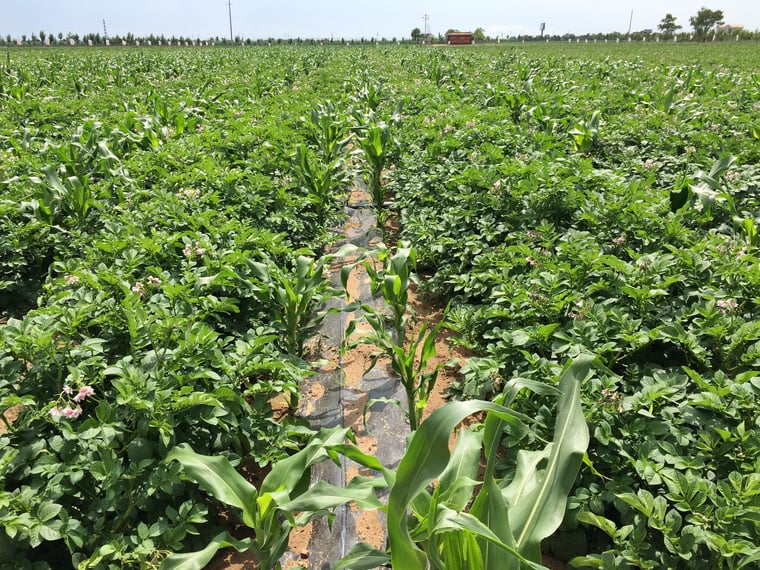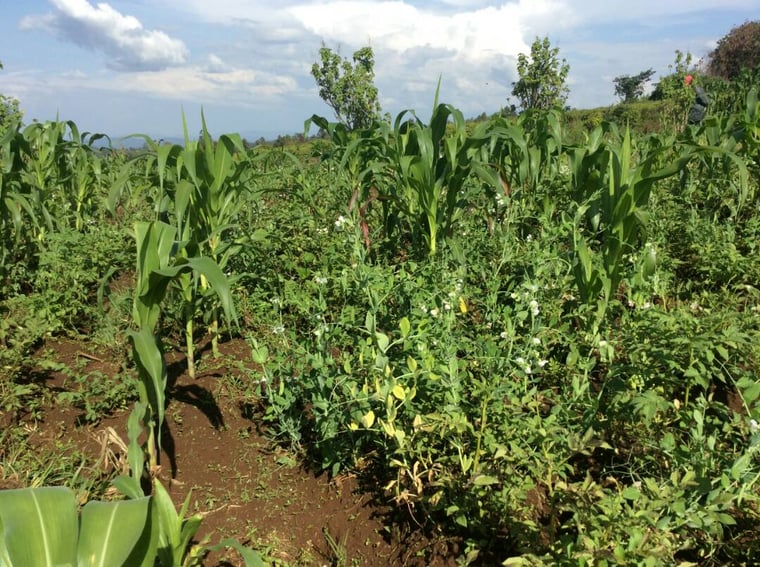
When potato is grown in a field with another crop, there is intercropping. There are several reasons why growers mix potato with other crops. Resource capture is a major one with, for example, maize tapping water and nutrients from deeper soil layers than potato. More water is made productive when the two crops are grown together.
Mixing crops on the same field places a greater distance between the individual plants of each crop compared to a single crop. Deleterious organisms, pests and diseases have to cross greater distances from host plant to host plant in case of intercropping of maize and potato. They also find a barrier between host plants: the not host plant. The function of the barrier caused by the other crop is evident, with especially movements of insects restricted. Potato, with a prostrate growth habit in the same field, along with erect maize, is shadowed by maize plants. This leads to lower leaf and soil temperature of the crop, which is an advantage for the potato crop when grown at warm tropical mid-elevations.
Insect repellent
Occasionally, intercrops are observed such as in South Eastern Europe, where potato is associated with onions, not aimed at improving the use of resources but rather as an insect repellent that reduces the incidence of e.g. white fly and aphids. Planting potatoes on the same day as maize or sowing onion after hilling of the potato crop, is an example of true intercropping with the harvest also taking place almost simultaneously. These intercropping practices, albeit offering advantages for the grower, do not increase the land equivalent ratio (LER). So, if the two crops were placed side by side they would have had the same yield although at lower management costs. The higher costs of intercropping compensate for the advantages that it offers.

Potato is widely grown in association with maize in Asia and with maize and beans in Africa. Intercropping and relay cropping of potato with other crops improves the land equivalent ratio, increases ground cover, leguminous crops deliver nitrogen to the other crops in the association, it reduces erosion and is a food security measure in case one crop suffers from adverse biotic or abiotic conditions. It is, however, less applicable in fully mechanized cropping systems.
Want to keep reading about the potato crop and the conditions influencing the growth and yield of potatoes?
Our Potato handbook is a global potato university in 1 book!
Buy your copy today and get a one-year free subscription to PotatoWorld magazine.

